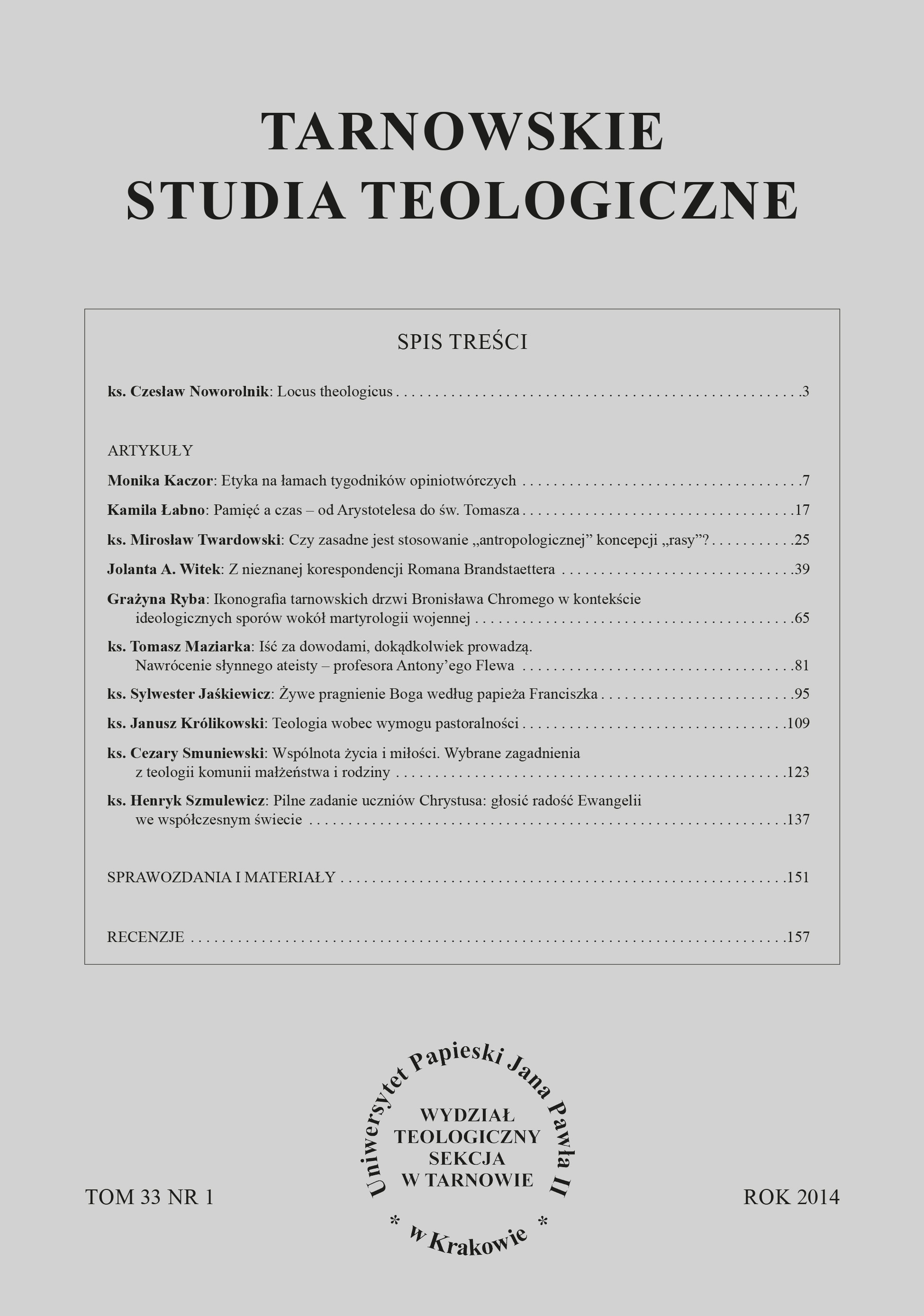Is appropriate to use the “anthropological” concept of race?
DOI:
https://doi.org/10.15633/tst.712Keywords:
anthropological concept of race, racial paradigm, geneticsAbstract
The term “race” was introduced to the scientific vocabulary in the mid-eighteenth century by the French philosopher, scientist and mathematician Georges-Louis Leclerc, Comte de Buffon. In anthropology, this concept settled primarily through the German scientist Johann Friedrich Blumenbach. From the outset, the concept has aroused controversy among scholars. Even Charles Darwin himself expressed clear skepticism towards using the concept of race in reference to people. Clear doubts about the scientific basis of racial typology were reported in the early twentieth century by the American anthropologist Franz Boas, and later, in the 1940s, by the British-American anthropologist Ashley Montagu. In the 1960s, the American anthropologist and geneticist Frank Livingstone, on the basis of genetic evidence, sought to undermine the concept of human races. At the same time, a prominent American geneticist Theodosius Dobzhansky expressed a similar opinion, claiming that there were no races which would be “discrete units”. In the 1970s, the American geneticist Richard Lewontin, on the basis of his own research, proved that there is no possibility of isolating races based on genetic criteria.
In this article, we refer to the achievements of modern biology, especially genetics, to find out whether it is appropriate to use the “anthropological” concept of race. For a fuller picture of the issues of interest, we refer also to the historical sources, recalling the arguments put forward by various authors over the centuries against the concept of race in relation to human beings.
References
Barbujani G., Magagni A., Minch E., Cavalli-Sforza L. L., An apportionment of human DNA diversity, „Proceedings of the National Academy of Sciences USA” 94 (1997) no. 9, s. 4516–4519.
Biondi G., Rickards I. O., The scientific fallacy of the human biological concept of race, „Mankind Quarterly” 42 (2002) no. 4, s. 355–388.
Dobzhansky T., Comment on Livingstone, „Current Anthropology” 3 (1962) no. 3, s. 279–280.
Editorial, Census, race and science, „Nature Genetics” 24 (2000) no. 2, s. 97–98, http://dx.doi.org/10.1038/72884.
Editorial, Genes, drugs and race, „Nature Genetics” 29 (2001) no. 3, s. 239–240, http://dx.doi.org/10.1038/ng1101-239.
Frisancho A. R., Human biological variation, w: Encyclopedia of race and racism, t. 2, ed. J. H. Moore, Farmington Hills 2008, s. 121–126.
Introduction, w: Encyclopedia of race and racism, t. 1, ed. J. H. Moore, Farmington Hills 2008, s. XI–XIV.
Jasicki B., Panek S., Sikora P., Stołyhwo E., Zarys antropologii, Warszawa 1962.
Jorde L. B. et al., The distribution of human genetic diversity: A comparison of mitochondrial, autosomal, and Y-chromosome data, „American Journal of Human Genetics” 66 (2000) no. 3, s. 979–988, http://dx.doi.org/10.1086/302825.
Lewontin R. C., The apportionment of human diversity, w: Evolutionary biology, t. 6, ed. T. Dobzhansky, M. Hecht, W. Steere, New York 1972, s. 381–398.
Livingstone F., On the non-existence of human races, „Current Anthropology” 3 (1962) no. 3, s. 279–281.
Long J. C., Scott N., Lewis C. M. Jr., Human genetics, w: Encyclopedia of race and racism, t. 2, ed. J. H. Moore, Farmington Hills 2008, s. 126–134.
Montagu A., Man’s most dangerous myth. The fallacy of race, Walnut Creek 1998.
Relethford J. H., Apportionment of global human genetic diversity based on craniometrics and skin color, „American Journal of Physical Anthropology” 118 (2002) no. 4, s. 393–398, http://dx.doi.org/10.1002/ajpa.10079.
Relethford J. H., Genetic variation among populations, w: Encyclopedia of race and racism, t. 2, ed. J. H. Moore, Farmington Hills 2008, s. 29–34.
Rosenberg N. A., Pritchard J. K., Weber J. L., Cann H. M., Kidd K. K., Zhivotovsky L. A., Feldman M. W., Genetic structure of human populations, „Science” 2002 vol. 298 no. 5602, s. 2381–2385, http://dx.doi.org/10.1126/science.1078311.
Templeton A. R., Human races: A genetic and evolutionary perspective, „American Anthropologist” 100 (1998) no. 3, s. 632–650, http://dx.doi.org/10.1525/aa.1998.100.3.632.
Wilson E. O., Brown W. L. Jr., The subspecies concept and its taxonomic application, „Systematic Zoology” 2 (1953) no. 3, s. 97–111, http://dx.doi.org/10.2307/2411818.
Downloads
Published
Issue
Section
License
Authors who publish with this journal agree to the following terms:
- Authors retain the copyright and full publishing rights without restrictions, and grant the journal right of first publication with the work simultaneously licensed under a Creative Commons Attribution 4.0 International License that allows others to share the work with an acknowledgement of the work's authorship and initial publication in this journal.
- Authors are able to enter into separate, additional contractual arrangements for the non-exclusive distribution of the journal's published version of the work (e.g., post it to an institutional repository or publish it in a book), with an acknowledgement of its initial publication in this journal.
- Authors are permitted and encouraged to post their work online (e.g., in institutional repositories or on their website) prior to and during the submission process, as it can lead to productive exchanges, as well as earlier and greater citation of published work (See The Effect of Open Access).

